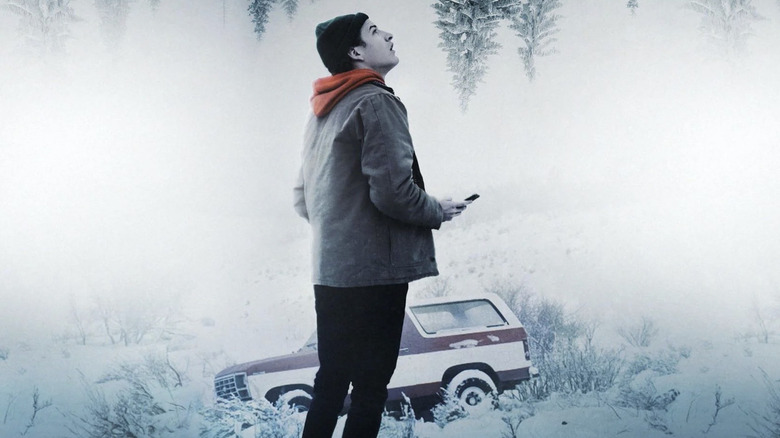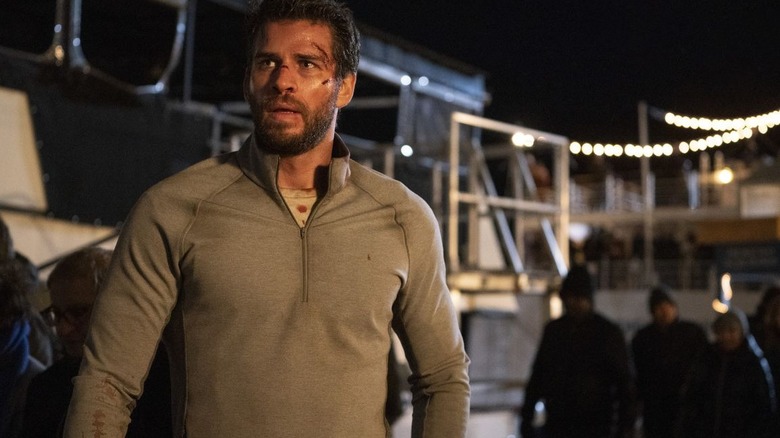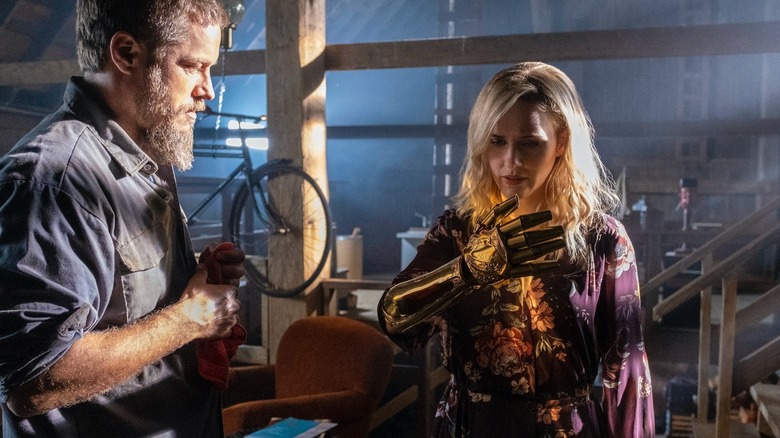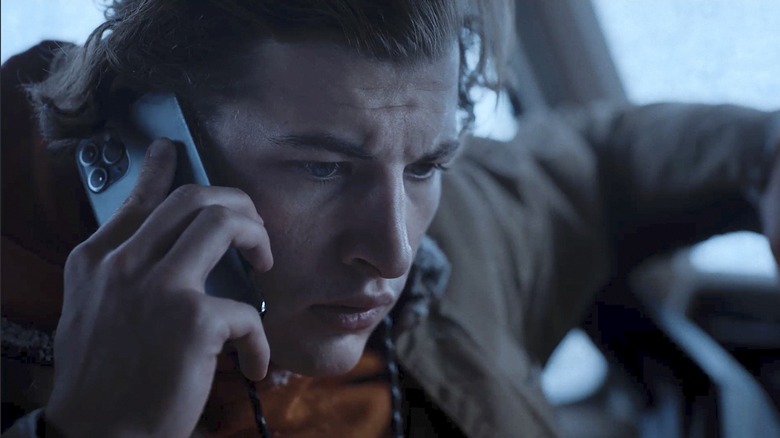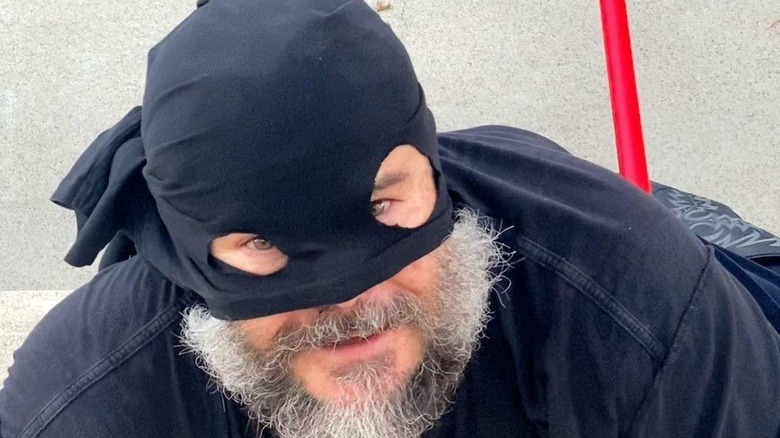Remembering Quibi, One Year Later After Its Tragic Demise
It has been one year since Quibi shuttered its doors after a brief but exciting (to this viewer) seven months in operation. Launched on April 6, 2020 and shut down December 1 that same year, Quibi has gone on to be widely derided for being a $2 billion dollar blunder destined to go down in the record books as one of the most misguided business ventures of all time. It is already being compared to the Edsel, New Coke, Bic for Her, The UPN, or Nintendo's Virtual Boy, and it won't be long before it is forgotten entirely. This is a sad moment of remembrance for the platform's small, but passionate, legion of followers (in the interests of full disclosure, I own maybe the only Quibi t-shirt in existence). So let us take a few moments to give a short eulogy to the Little Streaming Service that Could, But Didn't.
Remind Me Again, What Was Quibi?
The idea for Quibi must have come to founders Jeffrey Katzenberg and Meg Whitman after they had observed people on a bus watching TikTok videos. One can even hear the conversation they had over a board room table festooned with croissants: Say, Jeff, people seem to like watching short-form amateur entertainments on their phones while in public. They sure do, Meg. Wouldn't it be keen if we offered high-end, professionally made films and TV shows in the same format? Yes, very keen, Jeff. We could offer it with cutting-edge video technology, people would be able to shift the shows' aspect ratios by turning their phones, and no video would be over 10 or 11 minutes in length. Just little quick bites. Meg! Did you say QUIck BItes?
And, lo, Quibi was born.
The idea behind Quibi was individual public consumption. Their short-form content model was intended for people to watch while on a bus, in line at the store, or hanging around in waiting rooms. And, frankly, this is not a bad idea. Why not have shows and films specifically designed to be broken into bite-size comestibles, made for art consumption on the go? Many, after all, do ingest their favorite videos in this fashion, as seen by the popularity of TikTok or the number of views on certain short YouTube videos. If you want to watch a hot new film starring Liam Hemsworth and Christoph Waltz, based in the classic story "The Most Dangerous Game," now you can watch it in specially designed chapters.
Quibi was, in many ways, a resurrection of the classic theatrical serial, constructing longer-form stories over the course of seven to 10-minute chapters. Only updated for modern, portable media consumption habits. And all for only $5 a month.
And There Was Some Excitement
The announcement of Quibi was met with mixed-to-negative reactions. Immediately, film purists pointed out that watching an entire feature film on a telephone was antithetical to the very notion of cinema, and more than one personal acquaintance of mine announced that they would never subscribe to such a service because they never want to watch a film that way. It's likely many of us were still burned by Sony's previous attempt, back in 2007, to break existing TV shows into smaller "minisodes" meant for viewing on MySpace. That, too, was derided. Heck, even the name was mocked.
It certainly didn't help matters that Quibi was announced as a phones-only platform, and would be offering no in-home, for-television app. If you wanted to see a Quibi show, you had to watch it on a palm-size telephone screen. There was also a general attitude that Quibi was a misguided attempt by Boomers (Katzenberg was born in 1950, Whitman in 1956) to elbow their way into the Gen-Z gestalt; a "How do you do, fellow kids" meme in a $2 billion media venture form. Didn't they understand that the appeal of TikTok and YouTube was that it felt homemade and sincere? Quibi, in comparison, couldn't possibly be sincere. People scoffed at the conceit that such a platform could possibly compete with both Netflix and with TikTok simultaneously. The ambition, it seemed, was far too large.
But, yes, there was some enthusiasm. Mostly in the shows offered in Quibi and in the talent it attracted. Quibi offered no reruns of existing shows, nor recut versions of existing movies, meaning they needed many, many hours of original content to fill their coffers, and offer a wide variety of programming right out of the gate. They launched with some high-profile titles, and announcements for even larger shows and films down the road.
Some of Quibi's Launch Titles
Among the launch titles on Quibi were a new version of "The Fugitive" with Kiefer Sutherland, a new version of "The Most Dangerous Game," the dark police drama "#FreeRayshawn," the '90s coming-of-age-crime story "When the Street Lights Go On," and a new horror serial series led by Sam Raimi called "50 States of Fright," which was to feature 50 horror stories, one for each of the United States. Raimi tackled the debut episode devoted, of course, to Michigan. There were also a collection of comedies, including, notably, the revival of "Reno 911!," the star-studded Agatha Christie spoof "The Mapleworth Murders," the film "Die Hart," in which Kevin Hart played himself, and the gloriously bizarre "Dummy," starring Anna Kendrick as Cody Heller, the real-life girlfriend of "Rick and Morty" creator Dan Harmon, and the relationship she had with Harmon's talking silicone sex doll.
Additionally, Quibi offered comedy news shows, a few weird reality programs — "Murder House Flip," a home improvement show specifically for homes where murders took place, was certainly a sight to behold — and even a few game shows, including a revival of "Singled Out." There was a Rotten Tomatoes film review show — and video film reviews can fit perfectly into their 10-minute format — as well as an animated daily horoscope program (which was occasionally funny), a sex advice program (Quibi was generally PG-13 to R-rated content), and just straight up news from the BBC, Telemundo, E!, Polygon, Vox, and NBC.
Some projects never came to fruition: I was looking forward to "Spielberg's After Dark," an anthology series, directed by Steven Spielberg, that was only going to be available on the platform during nighttime hours. You couldn't watch it during the day.
Yes, they were a real platform.
The Tech Experiment
Quibi's tech — which was always impeccable, by the way — allowed for shifting aspect ratios, leading to some interesting creative choices for filmmakers. In what might be the platform's best film, Zach Wechter's and Jack Seidman's "Wireless," audiences could watch the central drama of the feature by holding their films in landscape mode — where we would see Tye Sheridan frantically making phone calls from a truck he is driving down a remote, snowy road — but then hold their phones upright to see whatever was on the main character's phone in that moment in the film.
You could switch back and forth as much as you wanted, going so far as to see what radio station he was listening to, and even check on his phone's battery life ... which would become a plot point later in the film. This is a clever way to add an element of interactivity to a film, while still allowing it to play out as cinema. It's also constructed in such a way that it cannot be consumed any other way; I don't know how something like "Wireless" could play on a television.
In terms of the upright-screen aesthetic, no other film on the platform took advantage better than Mary Harron's horror film "The Expecting," an poverty-forward, kitchen sink riff on "Rosemary's Baby." When viewing a film in a more tradition 2.39:1 Scope aspect ratio, filmmakers tend to follow the Rule of Thirds, that is: composing shots so the focus of the frame is one-third of the way across the screen.
With an upright aspect ratio of 1:2.39, all the action is now upright. As such, a frame now has landscapes that rest at the very bottom of a tall sky. People are now boxed in, their whole bodies on display from top to bottom, the edges of their world right next to them. Harron had an eye for filling the frame in a new way, and "The Expecting," while not an entirely original tale, explored a cinematic aesthetic that existed at 90 degrees from what our eye is used to. Why not free ourselves of certain aspect ratios? Technology allows for so much more.
The Princess Bride Remake
"Home Movie: The Princess Bride" was, as it would eventually be revealed, the nexus of why Quibi worked, and a peek as to the biggest reason why it failed.
In "Home Movie: The Princess Bride," a slew of celebrities were asked to costume themselves and act out — in their own homes — an assigned scene or two from Rob Reiner's beloved 1987 classic. Everyone from Seth Rogan to Penélope Cruz, from Fred Savage to Jennifer Garner, from David Oyelowo to Finn Wolfward to Jack Black to Retta to Zoe Saldana to Patton Oswalt to Charlize Theron to Tiffany Haddish to Elijah Wood to Javier Bardem to Common to Chris Pine ... you get the idea.
Anyway, each of them "sweded" their own scene or two out in public parks, or in their own personal living rooms and backyards, each bringing their own take to the material. Some did direct imitations, others did unusual riffs. All were passionate. The film began with Fred Savage as the grandson (reprising his role) and Rob Reiner as the grandfather. The film ended with Rob Reiner as the grandson ... and Carl Reiner as the grandfather. This was the last thing Carl Reiner filmed before his death in June of 2020. I defy you not to feel at least a little wistful.
This home movie approach understood the function of "The Princess Bride" as an intergenerational tale passed from grandfather to grandson. In re-enacting it on Quibi, the actors are become part of a larger bardic tradition of fairy tale and myth, now updated for the 21st century technological milieu. More than just fan pandering, "Home Movie: The Princess Bride" is part of the myth.
But Fail It Did
But the very existence "Home Movie: The Princess Bride" reveals maybe the main reason why Quibi tanked: COVID-19. The reason "Home Movie" was filmed the way it was because filming of all other projects had shut down due to the pandemic. As such, actors, like the rest of us, were confined to their homes, unable to visit the set of whatever they might had been working on. In their idle time (when they weren't singing "Imagine," blecch), Quibi came to their door and asked of they could cobble together a classic film at home.
But that was the problem: Everyone was at home. As such, Quibi, a platform meant for art consumption on the go, was now only at home as well along with every other streaming platform. It's hard to sell Quibi and its unique proscenium when the entire catalogues of Netflix, Prime, and HBOmax are awaiting. Heck, it was even a time to finally catch up on The Criterion Channel, Ovid, and Night Flight. It was easy to ignore Quibi — launched into a mosh pit of mockery — when all the films you had meant to catch up on were waiting for you.
And Flights of Angels Sing Thee to Thy Rest
It has been one year since Quibi shut its doors forever. After months of quiet silence, The Roku Channel stepped up and bought the Quibi catalogue, repackaging them as "Roku Originals." Watching the Quibi shows on a TV feels ... off. You can tell something is missing. Plus, the Quibi tech allowed for a pretty smooth transition from one episode to the next. Every single streaming service is comparatively clunky and difficult to navigate (don't get me started on the murderous frustration sparked by interacting with Hulu or Paramount+). Quibi was smooth, it worked well, and it was fascinating.
Its serialized format was fun and left audiences, perhaps, more accepting of sillier film tropes. While lambasted for being a cynical enterprise meant to approximate the patois of hip-talking media-soaked Zoomer youths, Quibi — a $2 billion dollar venture, mind you — actually managed to feel earnest. Its struggle made its earnestness show through, and its failure left interesting stories, weird, lost media experiments, and a small but devoted fan base that consists of me and only me.
Failure is far more interesting than success. And while we can all chatter about whatever the Disney might be doing in its quest for indifferent, Big Brother-like global dominance, the legend of Quibi will always loom quietly in the shadows, ready to remind us all that ambitions can be cut down, and that great art can remain undiscovered. It's not a constant reminder, mind you, but it can give us a quick bite.
